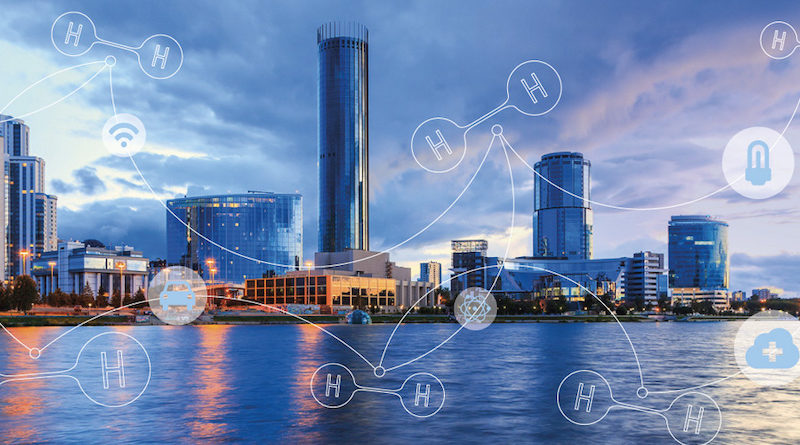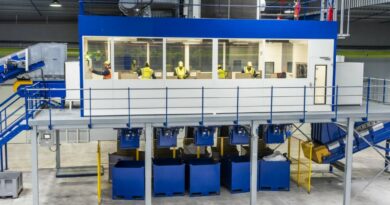
Hydrogen Strategies and The Importance of Solving the Dual CO2 And Methane Performance Challenge
From the European Union’s (EU) inception, energy policy has been at the heart of the political activity addressing our greatest challenges. Given that climate change and energy are two sides of the same coin, the need to achieve a carbon-neutral economy is one of the most significant challenges of our time. The European Green Deal is our answer to this challenge, and it will lead us to climate neutrality by 2050 at the latest. It offers us an opportunity to maximize the benefits of quality of life, health, resilience, and competitiveness.
We are currently discussing how to achieve the Green Deal’s ambitious goals in the most equitable and cost-effective way. Several strategies and plans included in the deal have been presented over the last months, such as Energy System Integration, Hydrogen, Renovation Wave, and the Methane strategy.
These strategies will help to reform the policies and regulations related to energy and the transition to a climate neutral economy. The work to develop the EU Green Deal has not slowed despite the unexpected COVID-19 pandemic. On the contrary, it has accelerated. The European Green Deal should guide our steps towards recovery.
As a shadow rapporteur of the Energy Sector Integration report, I believe that it is essential to take into account the synergies between energy carriers, infrastructures, and sectors to address the necessary acceleration of Union decarbonization, implementation of renewable energies, and improvement of energy efficiency to the levels required by the goal of reducing emissions by 2030, and to achieve climate neutrality by 2050.
Energy efficiency, together with electrification through renewable and sustainable energy sources, is the basis of the future energy system. However, as renewable electricity is unlikely to cover all energy demand in the next decades, additional energy carriers will of course be required. Therefore, clean gas has an important role to play and also a significant place in our discussions.
In the different impact assessments and reports we can see that there is significant potential for renewable gases, and most notably renewable hydrogen, to decarbonize those sectors where cutting emissions is otherwise difficult. The gas sector, amongst other sustainable energy carriers, should engage in decarbonization, replacing as much as natural gas as possible with clean gases like renewable hydrogen, biogas, and synthetic fuels.
For the decarbonisation of our economy in general, and of the gas sector in particular, we must look beyond CO2 emissions. Methane is the second most important greenhouse gas (GHG) —19% are energy-related — as the recent European strategy for the reduction of methane emissions highlights.
The reduction of methane emissions is imperative to both decarbonize the gas sector and integrate the power and gas sectors.
The European hydrogen strategy proposes the use of natural gas combined with CCS to produce blue hydrogen. In addition to the doubts regarding its economic viability, even more so considering its compatibility with the EU-ETS, we will need to carefully consider any related GHG emissions, including methane, and how to eliminate them. If we do not take into account all the process’s emissions or leaks, we will be cheating on the transition. If natural gas is to have a role as a bridge in the transition, those emissions have to change without delay. Likewise, to avoid problems with the promotion of decarbonised gases, possible leaks must be clarified and accounted for.
Nowadays, renewable gases are mainly biogases. According to the EU’s long-term decarbonization strategy, the EU’s consumption of biogas (and biomethane) is projected to increase by around four times today’s consumption. The methane strategy also proposes to promote the production of sustainable biogas to avoid methane emissions from waste. This is a win-win solution, which can also generate additional revenue streams for farmers and provide opportunities for development and investment in rural areas. However, it is essential for biogas developments to comply with strict sustainability criteria, to avoid the opposite effect. Measures to support biogas production must be carefully assessed to avoid perverse incentives that could lead to an overall increase in emissions.
We know that biogas will not be enough to meet the necessity of the EU’s decarbonized gas demand. Synthetic fuels, mainly renewable hydrogen, have a vast potential, not only as a clean carrier but also as an industrial opportunity. An energy carrier such as clean hydrogen will be necessary to decarbonize the sectors where direct electrification is not possible. It will also will allow to strengthen the power system as it is a suitable solution for storage and balancing the system. For this, it is essential to begin by clarifying the different types of hydrogen, as well as establishing standards that explain its characteristics and origin. The upcoming legislative reforms, such as the Renewable Energy Directive, should integrate this type of measures.
Without demand, we will not be able to lower the costs of clean hydrogen. However, not all solutions are compatible with climate-neutrality. We must prevent the promotion of demand from having perverse effects such as increased grey hydrogen.
The ultimate goal must be clean and sustainable gases. Therefore, the Commission’s objective to increase the capacity of electrolysers go in the right direction. It is necessary to prioritize gases produced with renewable energy (green gases) to be consistent with our climate-neutrality objective. Industrial clusters are an excellent starting point for action while possible long-distance infrastructures are being planned.
Our resources are limited. We cannot afford to invest in technologies or infrastructure that will be unnecessary in 30 years. It is essential to avoid any further lock-in from fossil fuel infrastructures and sunk investments, particularly any new fossil gas infrastructure. To that end, the taxonomy regulation and the revision of the TEN-E will help to improve our energy infrastructure and interconnections – especially power interconnectors – and to put the funds, tools and strategies in place as we embark on the path to climate-neutrality.
Finally, with the Next Generation EU instrument, we have an opportunity to invest in the technologies and processes of the future, be competitive, and improve people’s lives. It is essential to promote projects that allow us to meet our climate commitments, avoiding temptations to bet on outdated models. The transition towards climate neutrality will benefit from a safe and stable regulation that leaves no one behind.




